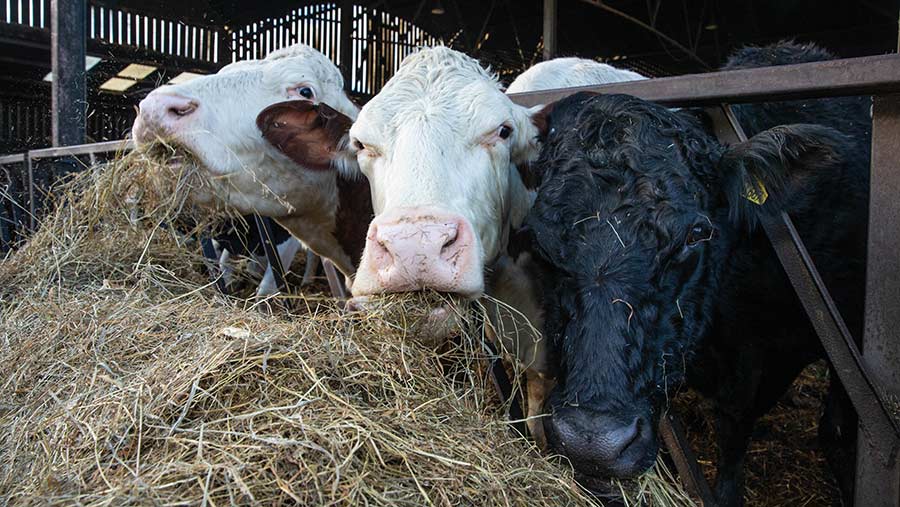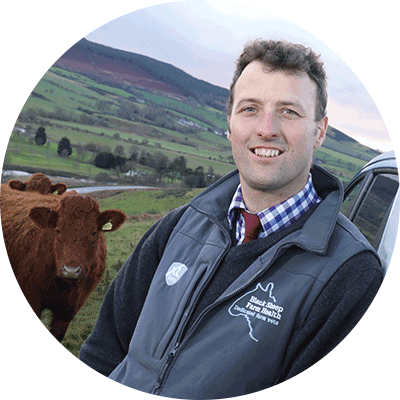Advice for reducing reliance on soya in suckler beef systems
 © Tim Scrivener
© Tim Scrivener While soya bean can be grown in southern England, the current varieties make it difficult to harvest in our relatively damp, cold climate and it is only grown on a very limited area.
Most of the world’s supply comes from the Americas. In South America, soya bean is typically planted into cattle pasture, forcing cattle farmers to new frontiers, and driving deforestation of native flora.
Therefore, it has negative environmental credentials.
Most soya bean fed to livestock in the UK is as a meal, after some oil has already been extracted, and is around 50 % crude protein.
See also: Can all-forage dairy diets be practical and profitable?
About the author

Joe Henry is a vet at Black Sheep Farm Health. After qualifying, he became predominantly a sheep and beef vet with an interest in disease prevention and health planning. He is an RCVS recognized advanced practitioner in sheep health and production and has trained vets nationwide in beef and sheep medicine.
Understanding crude protein
Crude protein is what it says: crude. As such, protein quality is variable.
Urea is almost 300% crude protein, but it is of poor quality in terms of amino acids, so it is not useful for boosting colostrum immunoglobin levels prior to calving.
Soya bean meal is, however, of excellent quality, unlike many alternatives.
Growing and fattening cattle can use the lower-quality proteins, such as distillers’ pellets, maize gluten and pot ale syrup. Because these have been cheaper, soya has not been used much in these production systems.
The importance of quality forage
Probably the best alternative to soya is to feed higher-protein forage. Good-quality, grazed grass has more than enough protein for ruminants and so no protein supplements are needed.
But when it comes to preserved forages, the picture is not so good.
Clover or lucerne silage can be 18% crude protein and feeds very well, but grass silage and hay can be variable depending on the age and composition of the sward, along with the time of cutting.
Different classes of stock have different protein requirements depending on the stage in their production cycle.
For instance, a dry, native breed suckler cow on maintenance can do fine on ad-lib moderate hay in mid-pregnancy.
But in the run up to calving, she will need an increased source of protein to produce the vital colostrum antibodies. One in three beef calves in one study had partial failure of transfer of antibodies.
This is traditionally where soya has been used as a quick fix – 1kg/day of soya bean meal for the last four weeks of gestation lifts not only the effective ruminal degradable protein but also the bypass protein, which is important for immunoglobulin production.
Bridging the protein gap – options
Alternative high-protein feeds such as beans or peas can be used but have higher levels of starch. This can lead to the pregnant cows gaining too much weight.
This is a concern as you must feed higher amounts of beans or peas than soya, as they have about half to two-thirds of the protein level.
Rapeseed meal is perhaps the nearest alternative to soya, with some forms having been heat-treated to allow more bypass protein.
Switching the cows to a higher-protein silage before calving will have a similar effect without any bought-in supplements used and should be the long-term aim for beef farms to be both financially and environmentally sustainable.
Forage shortage
This winter, some producers may be facing a shortage of preserved forage on account of the drought, and plan to feed more straw as a result.
Straw is very low in protein – about 4.5% – so more protein will be needed to balance rations than when feeding hay or silage.
